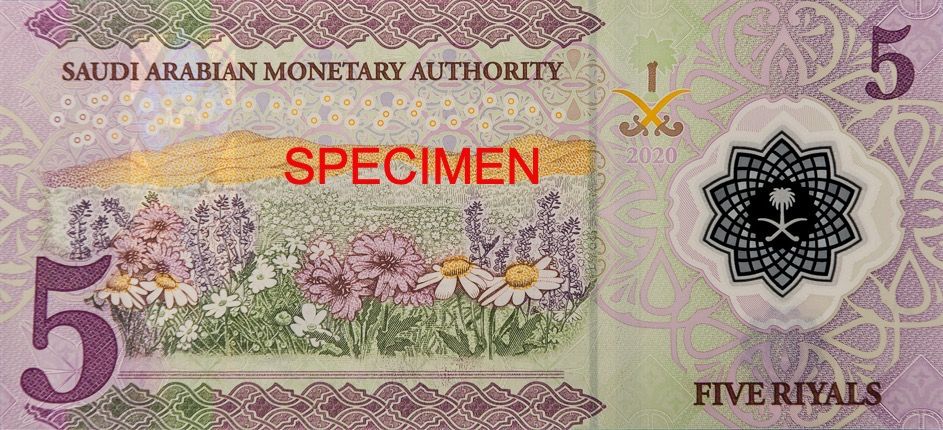The Saudi Arabian Monetary Authority has issued the Kingdom’s first polymer banknote.

The new 5 Riyal banknote uses the same tried and trusted GUARDIAN™ polymer substrate that is already used in over 160 denominations and commemorative banknotes around the world.
Polymer was chosen, say the Saudi authorities because it’s distinguishable for its durability and strength. Studies around the world show that polymer banknotes have a working life that is typically to four times longer than paper notes.
As well as lasting longer in everyday use, the new 5 Riyal note also benefits from the additional security that is inherent in polymer banknotes.
Dr. Tim Berridge, Director of RD, Marketing and Design with CCL Secure, the company that manufactures GUARDIAN, points out that “Polymer enables features that are extraordinarily difficult to counterfeit. In many countries where polymer has been introduced, the proportion of counterfeit notes in circulation has dropped from as high as 30% to virtually zero.”
Security measures built into the new Saudi 5 Riyal note include a portrait of the Custodian of the Two Holy Mosques, King Salman Bin Abdulaziz Al Saud and a view of Shaybah Oil Field in the Empty Quarter. The coat of arms of the Kingdom of Saudi Arabia appears in a transparent window. Beneath this window, a pattern featuring the denomination changes colour when the note is tilted and metallic windows appear.
Another benefit of the new note is its environmental performance, says the Saudi Arabian Monetary Authority. The notes start life as polymer pellets – produced in Saudi Arabia – which are then transformed into GUARDIAN polymer substrate film, used only for banknotes. Once the banknotes have completed their working life, they can be recycled by turning them back into polymer pellets. These can then be used for a wide range of products, including kitchenware and building materials.